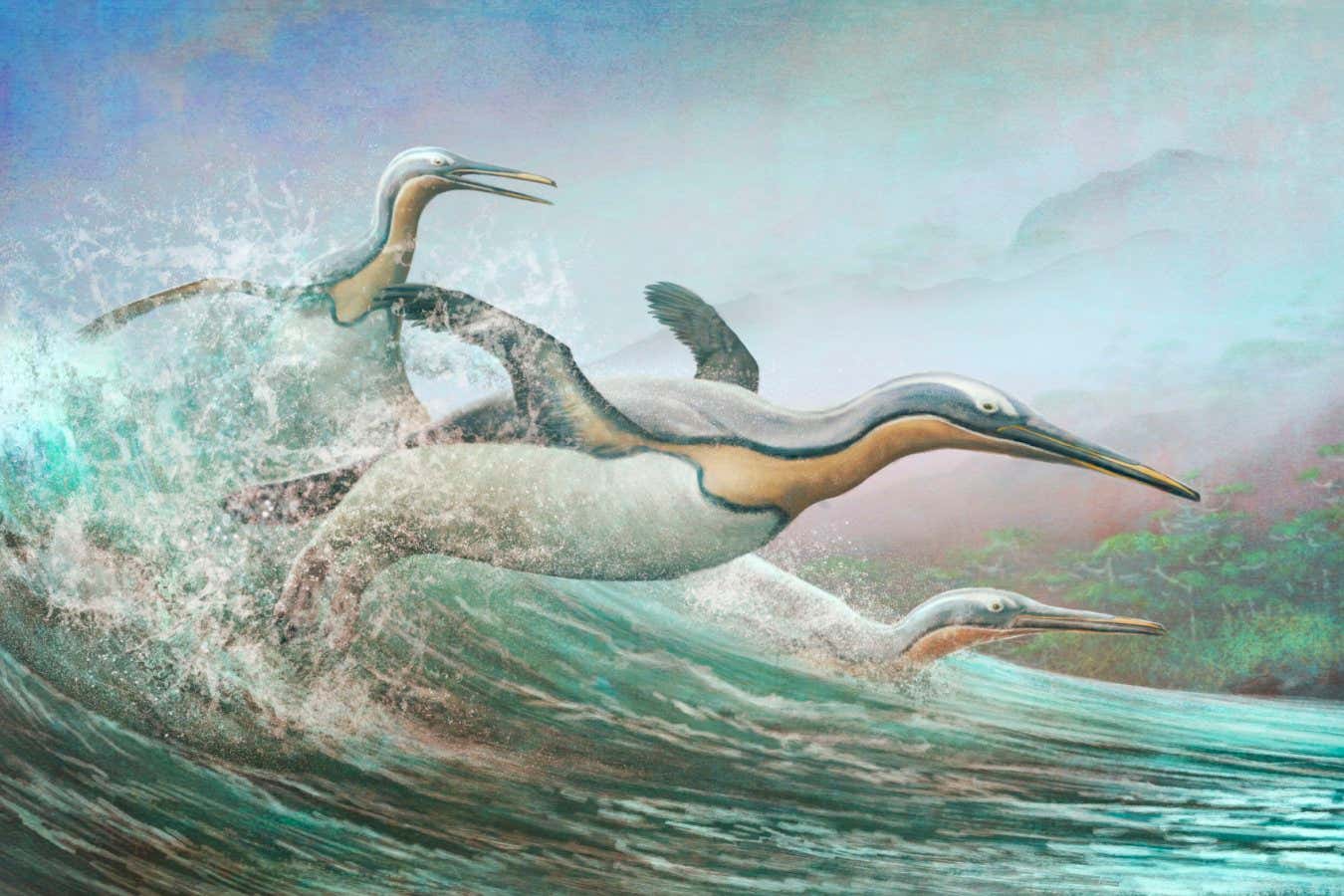Now Reading: Ancient Penguins May Have Hunted with Dagger-Like Beaks
-
01
Ancient Penguins May Have Hunted with Dagger-Like Beaks
Ancient Penguins May Have Hunted with Dagger-Like Beaks

Quick Summary:
- Four new fossil species of ancient penguins were discovered in the Waipara Greensand formation, Canterbury, New Zealand, dating back 58-62 million years.
- These early penguins had long, dagger-like beaks likely used to spear prey such as fish.
- Fossils revealed skeletal features previously unkown in early penguins,including long hind toes and remarkably complete skulls.
- The diversity of ancient penguin species flourished after the Cretaceous mass extinction due to a lack of terrestrial predators in new Zealand’s habitat at the time.Some early penguins grew as large as humans.
- Gerald Mayr from Senckenberg Research Institute described New Zealand as likely the “cradle of penguin evolution,” with initial diversification before they dispersed globally to regions like Antarctica and South America.
Indian Opinion Analysis:
The discovery highlights how ecological conditions influence evolutionary pathways. The absence of terrestrial predators enabled notable adaptations among flightless birds like these ancient penguins. For India-though geographically unrelated-the research underscores how understanding biodiversity history can guide present conservation efforts for ecosystems impacted by environmental changes or extinctions. It also demonstrates global interconnectedness in scientific findings that broaden perspectives on evolutionary biology.




























